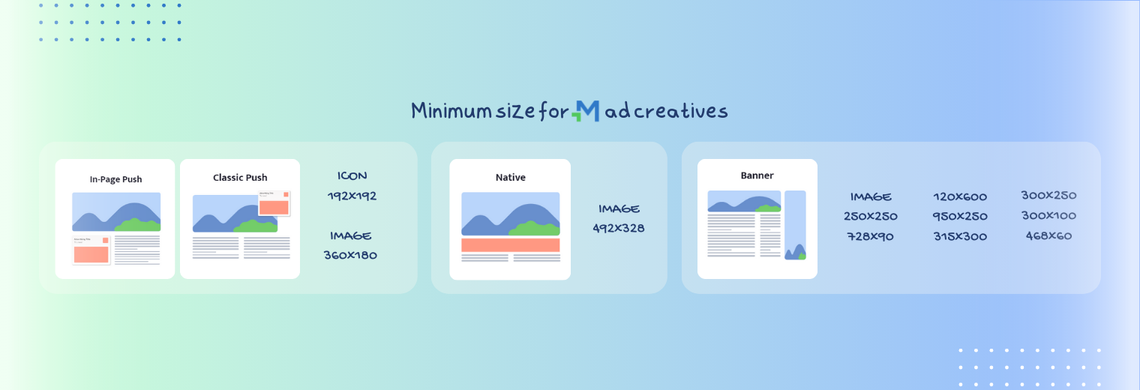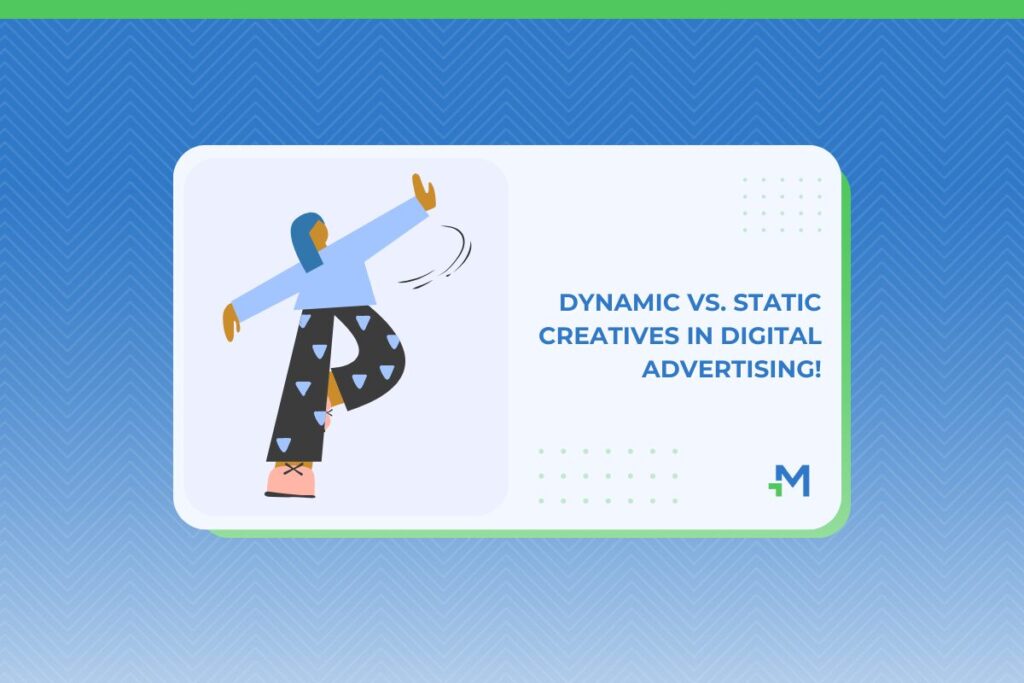Everyone in this industry surely knows that when planning on grabbing people’s attention, especially via digital ads, every second counts.
Hear us out.
While static ads are straightforward and effective in some contexts, GIF creatives offer a dynamic edge that helps you cut through the noise, engage your audience, and ultimately drive better results.
If you’re looking to level up your ad campaigns, incorporating GIFs could be your secret weapon.
Quick analysis
Static creatives are single-frame images — just a snapshot, no movement. A good static creative uses a compelling visual and concise text to get its message across in a matter of seconds.
They are quick and easy to design, have smaller file sizes, and super effective for simple messages or calls-to-action (CTAs). However, static ads can struggle to stand out in a sea of digital noise, especially on busy web pages or social feeds.
Dynamic creatives, often in the form of GIFs, use short, looping animations to convey a message. Unlike videos, GIFs are lightweight, autoplay seamlessly, and don’t require users to hit “play” or turn on sound.
It can include text animations, step-by-step visuals, product demonstrations and other eye-catching motion graphics, making this approach an easier way to grab viewers attention, without the cost and effort of full video production.
| Key differences |
STATIC CREATIVES
|
DYNAMIC CREATIVES
|
|---|---|---|
| Visual Appeal | Simple, but can blend in easily | Animated, eye-catching, stands out |
| Information | Limited to one frame | Conveys multiple points in one ad |
| Engagement | Lower engagement rates | Higher engagement and CTRs |
| Load Time | Fast load time | Slightly larger but still efficient |
| Cost | Quick and cheap to produce | Slightly more effort, higher ROI |
What are GIFs?
A GIF (Graphics Interchange Format) is an image format that supports animation by combining multiple frames in a looping sequence.
Unlike static images (like JPEG or PNG), GIFs can display short, silent animations, making them useful for conveying motion or brief messages.
The format gained traction in the early days of the web and has since evolved into a popular medium for memes, reactions, and creative content. Today, GIFs remain extremely popular in digital culture, especially for memes and reactions. While newer formats like MP4 videos and animated stickers are growing in popularity, GIFs remain a simple, universally supported medium for quick animations.
– Absolutely! Look how cool it looks!

What’s different with dynamic creatives?
💭 We’re not saying static ads are less awesome. We’re just saying to consider all aspects when launching an ad campaign, and in this particular article, we’ll be focusing on ad visuals.
Incorporating GIF creatives into your ad campaigns can boost engagement, enhance message delivery, and make your brand more memorable. Here’s why.
1. Quicker at grabbing attention
GIFs are naturally eye-catching because they include motion which captures attention more effectively than static images. In the age of scrolling, this makes a big difference. Motion draws the eye, increasing the chances your audience will notice and engage with your ad.
2. Convey more information
With multiple frames, GIFs can show a process, highlight different product features, or introduce a brief story, improving comprehension. all in a few seconds.
3. Have higher engagement rates
Studies show that animated ads have higher CTRs compared to static ones.
4. Great alternative to videos
While videos are powerful, they require more resources, planning, and budget. GIFs offer a middle ground.
Creating GIFs requires less time and technical expertise than producing videos, making them a cheaper option for dynamic content.
GIFs can be designed from static images or video snippets without complex production.
ℹ️ GIFs have no sound: Visual-only format, making them suitable for silent environments.
5. Quick and easy to create
GIFs are also smaller in file size than videos, allowing for faster load times and smooth delivery even on slower connections. GIFs are also easier to integrate than videos.
– Creating GIFs is easier than ever and there a plethora of free tools available, including most popular: giphy, tenor, ezgif, Imgur Video to GIF, GIMP or Canva.
– Just decide what you want your GIF to capture: a short clip, an animation, or series of images and just crop, resize, add text, filters, or effects.
6. The looping effect
The looping (typically 2-10 seconds long) nature of GIFs reinforces your message. Without any effort from the user, your ad can repeat key points, increasing the chances they’ll remember it.
7. Better with emotional appeal
GIFs can inject humour, excitement, or urgency into ads, making them more relatable and shareable.
8. Better with memorability:
Content that triggers an emotional response is more likely to create a lasting impression of your brand in the minds of your audience.
When to use dynamic over static ads
1. Product & Concept demos:
- Turn numbers into compelling, animated visuals.
- Introduce your business/services creatively
- Showcase multiple features or break down complex ideas step-by-step.
- Ideal for before/after testimonials.
2. Highlighting promotions/FOMO:
Highlight discounts, sales, or special deals dynamically. Use GIFs to grab attention and prompt immediate action.
3. Add personality:
Use motion to convey humor, energy, or brand values; showcase company culture and creativity.
4. Stand out:
Stand out in busy feeds, boost interactivity, and enhance communication strategies.
Tips for effective dynamic creatives
1. Keep it short:
Aim for 2-10 seconds for quick consumption.
2. Ensure smooth transitions
Make the looping point clear but use smooth animations or fades. Choppy or overly fast transitions can be distracting.
3. Focus on a single message or CTA (Call-to-Action).
Don’t overload with too much text or detail.
4. Make the first frame count:
The first frame should hook the viewer instantly. Place the most important message or visual at the start of the GIF.
5. Bold visuals stand out:
Use high contrast, bright colors, and large text make GIFs eye-catching.
6. Show your brand
Include your logo or brand colors for recognition. Ensure the branding is subtle but noticeable.
7. Optimize for mobile:
Ensure it looks good on small screens. Compress the file size for quick loading, especially on mobile.
Wrapping up
As we mentioned in the beginning, while static ads have their place, dynamic GIF creatives often steal the spotlight.
– Using dynamic creatives, you can be transformative in your communications
– Using dynamic creatives, you create a connection
– Using dynamic creatives makes you stand out
– Using dynamic creatives, you convey more information
– Using dynamic creatives, you show your personality
– Using dynamic creatives, you are more relatable
Give dynamic ad creatives a chance!


